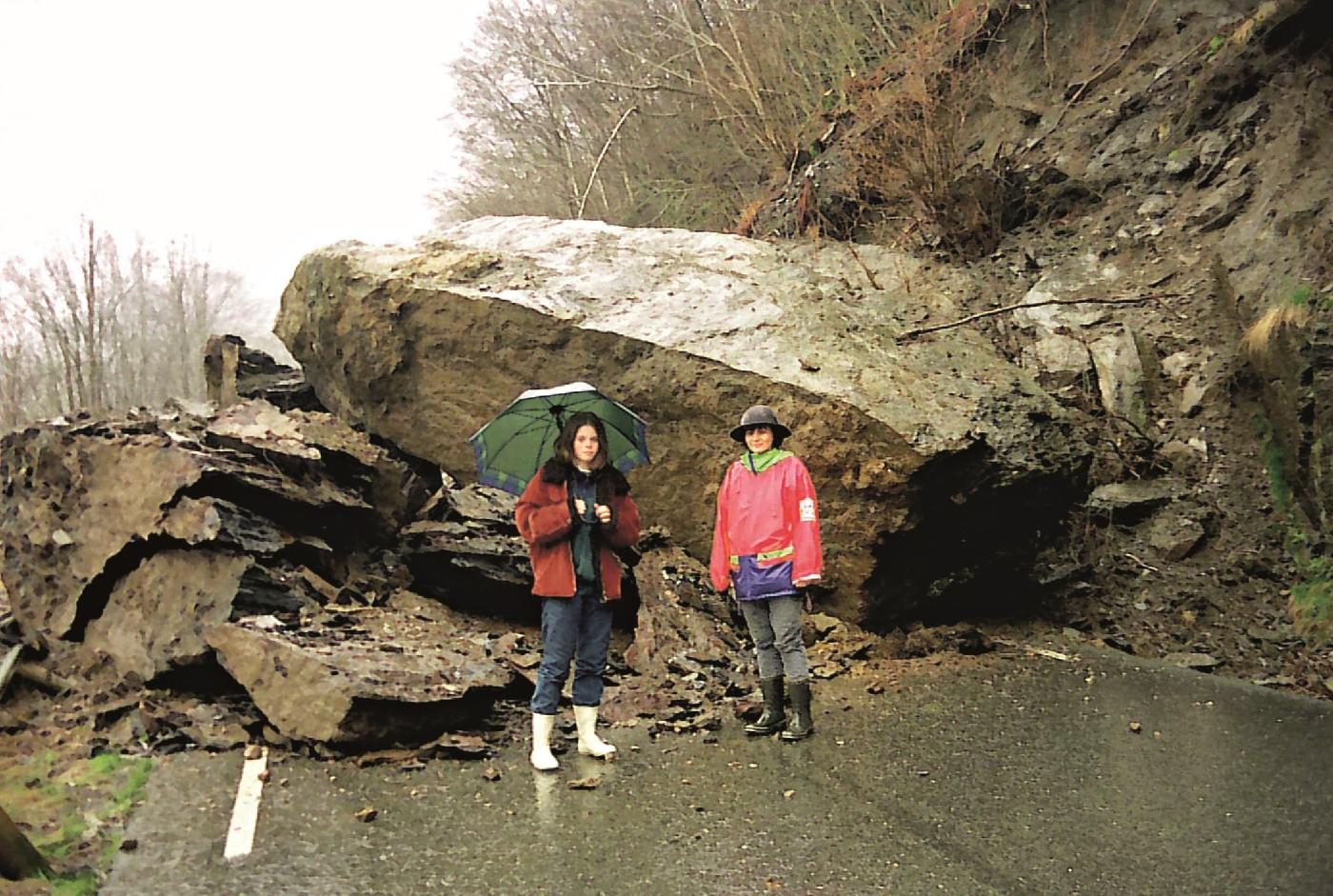The mica schist bedrock is unstable because a fault runs through Mundheimsdalen Valley, which continues south along the fjord. The mica schist therefore has many cracks, and large blocks have slid down the slopes from the top of the hillside. Some of these blocks are gigantic, as large as a house.
The vegetation in the deciduous forest helps to increase the erosion. When the long tree roots and other growth penetrate into the cracks in the bedrock, the stone can be loosened from the slope. Mica schist also weathers easily through chemical weathering to form clay minerals, and this gives a soil type that can easily creep downward in the steep terrain, especially after a lot of rainy weather. The clay minerals act as lubricants, reducing friction. This can cause the loose stones and blocks up on the slopes to slide, and fall down into the road.
The deciduous forests in Hordaland tend to grow on steep terrain at the foot of steep mountainsides, and they are often found where there is much landslide material. Huge blocks that fall down into the valleys can cause serious damage, but this does not damage the forest ecosystem. To the contrary, it is positive that some trees are ruined, since this creates an opening in the forest. This increases the number of ecological niches, giving a higher temperature and more light to the forest floor.
